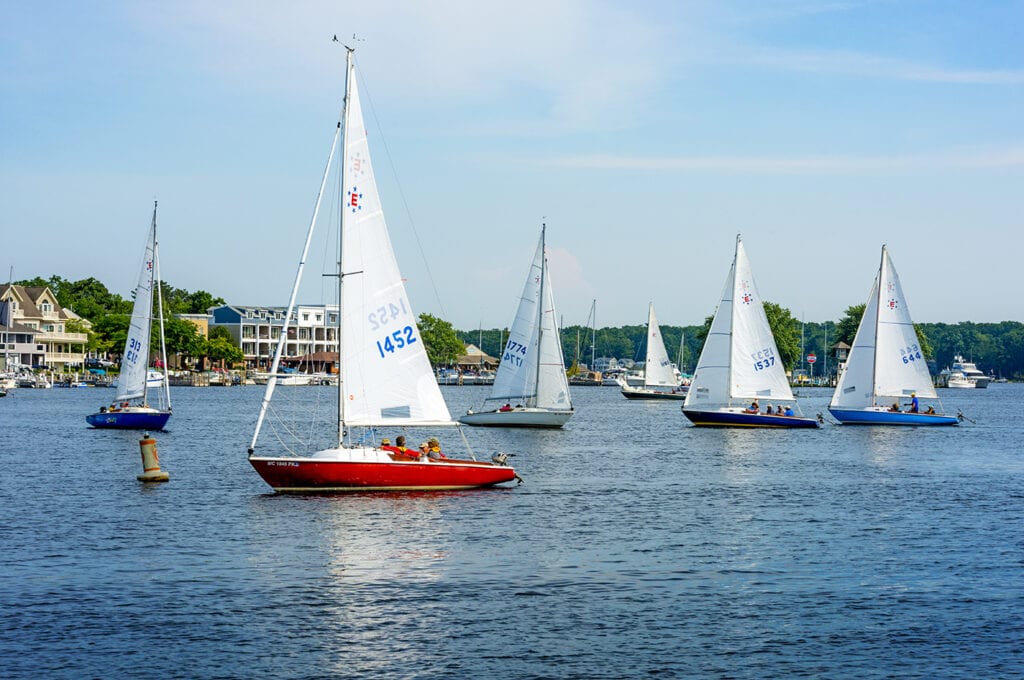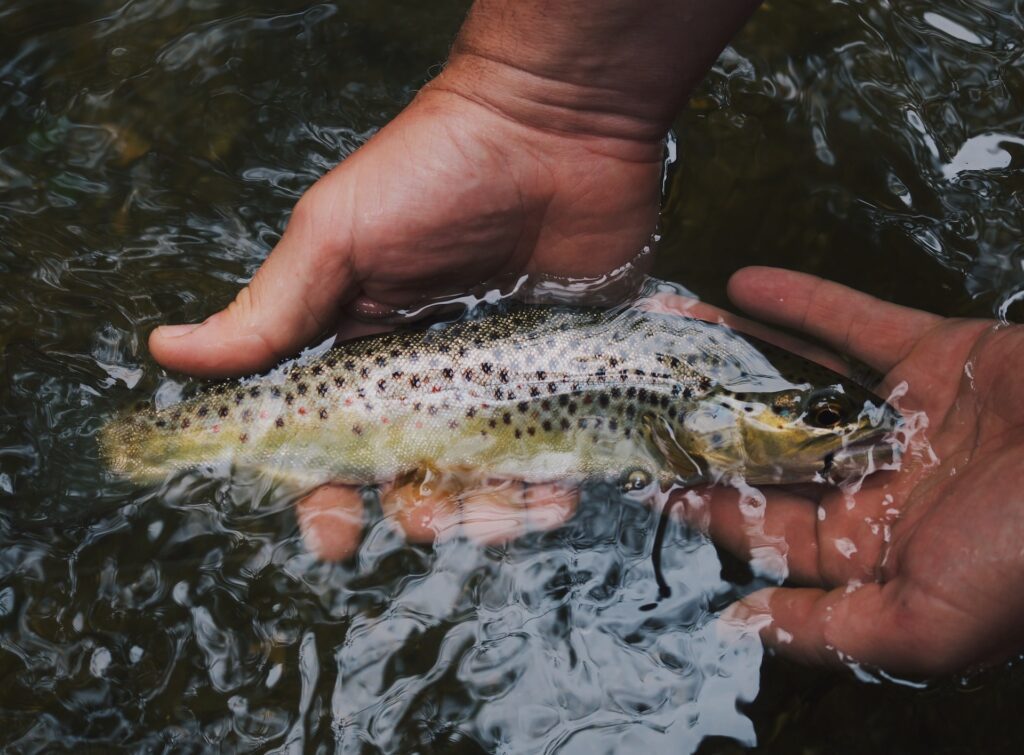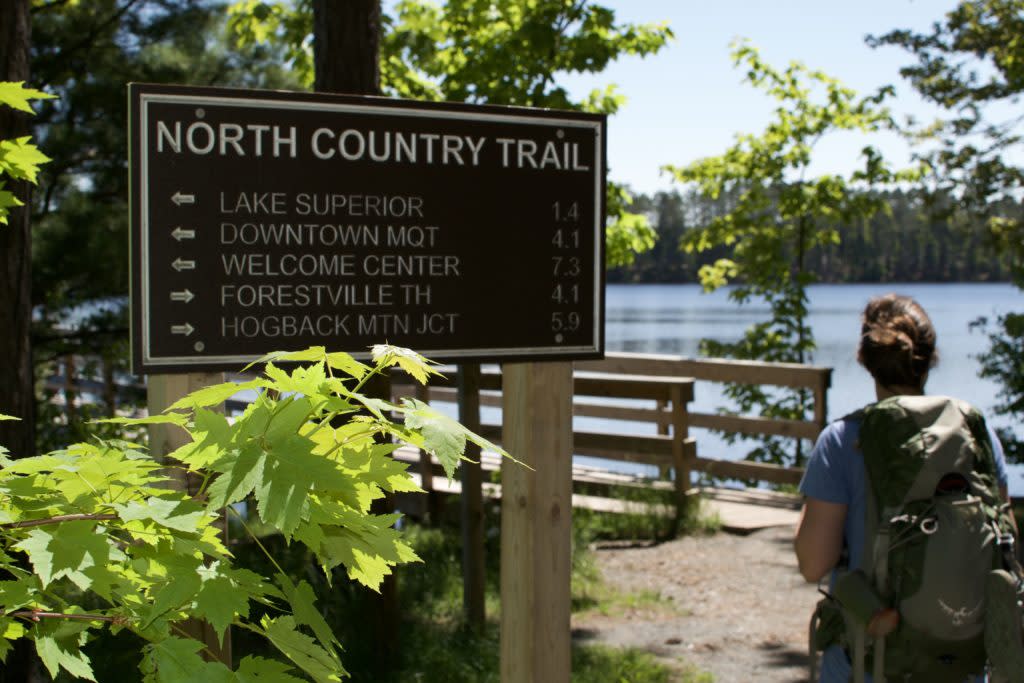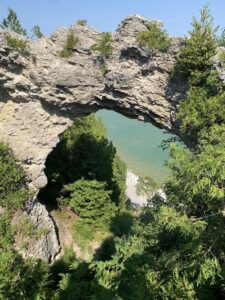
Sailing in Northern Michigan for Adults & Kids
Sailing is a special pastime that often brings friends together in Northern Michigan. And no wonder. The sailing here is wonderful.
Photo by Brad West on Unsplash.com
A visit to Northern Michigan is not complete without a walk along the Lake Michigan in search of Petoskey stones. The Petoskey stone is the fossilized remains of a type of colony coral that lived during the Devonian Period (about 350 million years ago). Northern Michigan was covered with a shallow marine sea, which favored the growth of many types of coral. Each cell represents a tube in which a small animal lived, waving its tentacles to secure food. The “eye” is actually a mouth of the animal.
The city of Petoskey was named after Ottawa Indian Chief, Chief Pet-O-Sega. “Pet-O-Sega” means the “Rays of the Rising Sun.” The eye of the stone is seen as the sun, and the lines or tentacles are seen as the sun, and the lines or tentacles are seen as the rays radiating from the sun. The stone was named Petoskey because of the abundance of them found on the shores of Little Traverse Bay. The State of Michigan adopted the Petoskey stone as Michigan’s state stone in 1865.
Petoskey stones crop up in many locations including fields and stone quarries but the favorite hunting ground has always been the area beaches. Wherever there are rocky shorelines from Petoskey to Traverse City, the stones can be found although most serious stone hunters swear that the Petoskey area has the better selection. The largest Petoskey stone ever discovered is on display at the Besser Museum for Northeast Michigan in Alpena. The stone is estimated to weigh roughly 4 tons, or 8,000 pounds.
Pleistocene glaciers (about two million years ago) plucked Petoskey stones from the bedrock and spread them throughout what is now Michigan and surrounding areas which explains why Petoskey stones can be found in gravel pits and along beaches far from the Petoskey area. The Petoskey State Park is a favorite “stone picking” spot as it has many miles of beachfront and its location on Little Traverse Bay seems to bring the rocks to the shoreline. Boats can often be seen just off of the beach of the Petoskey State Park anchored in shallow water while the passengers dive for rocks.
When dry, the rocks are gray in color but when wet (as in surf or light rain), the “eyes” of the fossils magically appear. It is the eyes that make the stone so identifiable.
Polishing the rock involves several steps. A rough “skinning” takes place first using a 100 grit wheel, sand paper, or wet emery paper. Next, the stone is smoothed with a 220 grit wheel or paper. The final paper or wheel, 600 grit, takes the stone to a scratch-free surface. A final buffing compound gives the high gloss people have come to expect in a polished stone. Some rock collectors “cheat” by using a coat of lacquer on the stone to bring out the sheen without the fine polishing.
Many homes and cottages in the northland have displays of Petoskey stones in a jar or vase of mineral water. This keeps the rocks in their natural state.
Petoskey stones are a treasure that is distinctive to our part of Michigan. Pick up a bucket and head to the beach for a fun filled hunt for the Petoskey stone!

Sailing is a special pastime that often brings friends together in Northern Michigan. And no wonder. The sailing here is wonderful.

The Oden State Fish Hatchery in Alanson produces three strains of brown trout and one strain of rainbow trout.

The North Country Trail is the longest trail in the U.S. and stretches from North Dakota to New York, passing through Northern Michigan.

Harbor Springs, Michigan has a vibrant, beautiful downtown business district complete with a beach, waterfront, shopping, dining, parks, and more!

Bicyclists, walkers, and roller bladers can go from Harbor Springs to Charlevoix on the 26-mile long Little Traverse Wheelway.

Get off the ferry from Mackinaw City or St. Ignace to Mackinac Island and the first thing you’ll see is the historic downtown area.

Acres and acres of Northern Michigan are abloom with trillium during May, only adding to the beauty of spring Up North!

Shop Northern Michigan antiques shops, art galleries, and furniture stores for home furnishings that are unique and affordable.

Arch Rock is a geologic wonder on Mackinac Island and stands 146′ over the Lake Huron shoreline- nearly 15 stories tall.